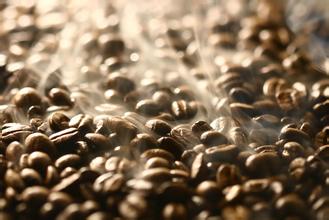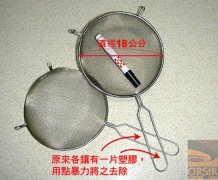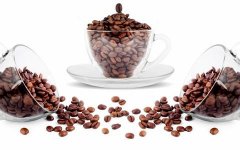The relationship between blending and roasting basic knowledge of coffee beans
Bake first and then mix, or mix first and bake? Which way is better?

If you have a definite recipe, of course the easiest way is to mix the different coffee beans first and then roast them together. But if you're trying and comparing different blends and ratios, you'd want to roast the beans before you try anything. Otherwise, every time you change the ingredients and proportions, you'll need to bake again.
For "Melange" blends and small test blends, it is more suitable for independent roasting. For example, when a small amount of "roaster coffee" needs to be added to a trial mix, the desired "roaster coffee" is best for independent roasting.
Some coffees are denser or vary in volume before and after roasting, and these beans are roasted differently than "washed" Arabica coffee. Arabica coffee processed by the "drying method" is roasted at a relatively high temperature. But in most cases, various coffee beans can be roasted together.
Generally all coffee beans can be roasted together. Consider baking independently only when baking results are not ideal. At this time independent baking can usually achieve better results. Especially for roller roasters, a relatively moderate baking degree can generally be found.
But some single-origin coffee beans are also not easy to roast evenly. For example, Yemeni coffee, Ethiopian DP coffee beans, etc. An uneven roast color is not a defect; only "washed" Arabica coffee needs to be roasted evenly.
General steps and principles of assembly
We should be clear about the following points before matching:
1. The theme of the selection
What kind of flavor do you want to mix, that is, determine the target of the mix.
2. Know the characteristics of each coffee bean
To blend coffee, you must first understand the characteristics of each individual coffee and understand the subtle relationship between roasting degree and coffee flavor, which can only be achieved by tasting the cup.
3. Determine the tasks of the coffee beans involved in blending
Since it is used with a variety of coffee beans, it is necessary to know the task of each coffee bean, whether it is to make her appear soft bitter, bright sour or heavy alcohol.
The following principles are generally followed when assembling:
1. Blending with the original beans requires the use of coffee beans with their own characteristics, and avoid the use of coffee beans with similar flavors. The selection of raw beans can be considered from three aspects:
Green bean processing method: that is, whether green beans are processed by washing method or drying method, the processing method has a great relationship with the flavor of coffee beans.
Origin of raw beans: coffee producing areas are generally divided into three regions, including Central and South America, namely Brazil, Colombia, Guatemala, Mexico, Honduras, Jamaica, Peru and other about 20 countries; Southeast Asia, namely India, Indonesia (including Java and Sumatra islands), Papua New Guinea and other about 10 countries; Arabia and Africa, namely Ethiopia, Kenya, Tanzania, Arabia, Uganda and other about 25 countries.
Coffee bean flavor: refers to coffee bean flavor acid, bitter, sweet, alcohol which is more prominent, or all aspects of a more balanced neutral beans. The most commonly used beans are Brazilian, Colombia and mocha.
2. Number and proportion of coffee bean types involved in blending
Since it is a blend, it naturally refers to more than two kinds of original beans, but a special example is that the same coffee beans with different roasting degrees can also be blended together, and even the new crop of the same coffee beans can be blended with aged coffee or old crop, so the type referred to in the blend is not a narrow coffee variety, but a broad extension to the flavor of coffee. When blending, 2 to 6 kinds of coffee beans are generally used, and too many kinds will not be able to express the unique flavor of coffee. Blending coffee generally does not adopt a 1:1 blending ratio, because this may inhibit each other's unique flavor, so there must be primary and secondary points to blend a more wonderful taste than single coffee. If you want to mix coffee with complex flavors, you can reduce the proportion of theme beans, and vice versa.
3. Blending coffee depends on trial and error, so a mathematical combination should be used to draw up a blending schedule before blending, and then the best solution should be determined through the blending-tasting process. Don't think this is a passive approach, in fact, only the experience, inspiration and so much effort of the blender can make a good cup of coffee.
Important Notice :
前街咖啡 FrontStreet Coffee has moved to new addredd:
FrontStreet Coffee Address: 315,Donghua East Road,GuangZhou
Tel:020 38364473
- Prev

Coffee roasting for beginners: fishing net baking hand net roasting
A few days ago in the baking discussion area, when I saw brother gix baking beans with a deep-fried basket, I remembered that I had posted a "fishnet roaster" in the Huangding baking discussion area. Its cost was very low, and it was easy to make and operate. Personally, I thought it was lighter than a milk powder can, and the effect was better than a pan, so it was a way for beginners to enter the field of baking beans, so I posted it here again.
- Next

Detailed Analysis of four cultivation Systems of Coffee in Ethiopia
Forest coffee (Forest Coffee): wild coffee, which accounts for 10% of Ethiopia's national output, is distributed in the wild coffee forest areas of the west and southwest, also known as the Kafa forest. The dense trees here provide the most natural shade for coffee trees and do not need manual care. Mother Earth is in charge of birth, aging, sickness and death, and coffee farmers can go directly to the woodland to harvest. Hansen
Related
- Beginners will see the "Coffee pull flower" guide!
- What is the difference between ice blog purified milk and ordinary milk coffee?
- Why is the Philippines the largest producer of crops in Liberia?
- For coffee extraction, should the fine powder be retained?
- How does extracted espresso fill pressed powder? How much strength does it take to press the powder?
- How to make jasmine cold extract coffee? Is the jasmine + latte good?
- Will this little toy really make the coffee taste better? How does Lily Drip affect coffee extraction?
- Will the action of slapping the filter cup also affect coffee extraction?
- What's the difference between powder-to-water ratio and powder-to-liquid ratio?
- What is the Ethiopian local species? What does it have to do with Heirloom native species?

